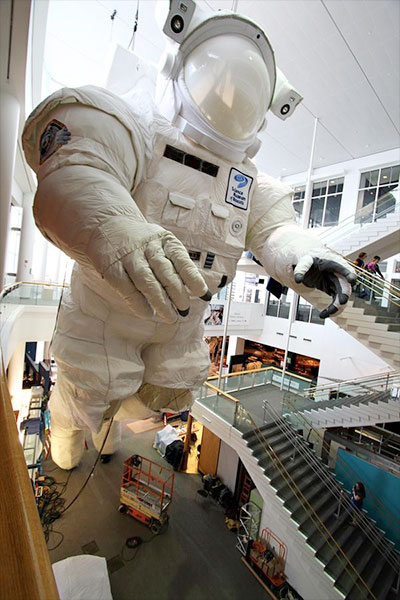Visitors to the Science Museum of Minnesota this winter will get a hands-on, climb-aboard experience at what it takes to live and work in space. On Friday, February 20, the museum will be the world premiere site for the
Space: An Out-of-Gravity Experience exhibition.
"Human space travel is making a lot of headlines of late, and the prospect is full of possibility," says Mike Day, senior vice president of the Science Museum of Minnesota. "By bringing this Space experience to the Science Museum, we're inviting visitors to get an in-depth, hands-on look at living and working in space, and what it means to the future of our society."

In the Space: An Out-of-Gravity Experience exhibition, visitors will explore the extraordinary environment of space, including the very real dangers that astronauts face during their missions above- Earth and the adaptations that engineers have developed to help them survive while in space. They'll learn about the vacuum of space, radiation, meteoroids, and temperature extremes, getting a look at all of the ways in which the forbidding environment of space can kill the humans who explore it.
Next, they'll enter into an area of the exhibition in which they'll find hands-on ways to explore the science of getting to space. They'll learn about weightlessness and the challenges it presents in long-term space living. They'll experiment with water rockets to explore the physics of the launch, and they'll use drop towers to investigate how familiar objects behave differently in the weightless environment of space.
Then, visitors will experience the sights, sounds, and smells on board an orbiting space station like the International Space Station (ISS), and they'll try their hands at some of the feats of engineering that support astronauts who live in space. Through games, multimedia components, and interactive exhibits, they'll learn how astronauts eat, sleep, and even go to the bathroom in space. They'll learn firsthand the challenges of working in space – from operating a robotic arm to managing the limited power supply available to keep life support systems running to discovering why working in a space glove is so difficult.
This section of Space features a full scale, climb-aboard mock-up of the Destiny Lab, the primary research facility for U.S. payloads on the ISS. With its rotating mechanism, the Destiny Lab will give museum visitors the sensation that they're floating as they get a virtual tour of the lab from astronauts who have worked there.
All along the way, visitors will find incredible footage of astronauts living and working in space, as well as interviews in which they reflect on the challenges and accomplishments of their unique line of work.
Space: An Out-of-Gravity Experience was designed and developed by the Science Museum of Minnesota in partnership with the International Space Station Office of NASA's Johnson Space Center, the California Science Center, and partner museums. It will run through September 7, 2015.












